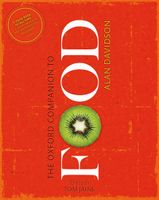Advertisement
Browning : Caramelization
Appears in
Published 2014
Sugar molecules begin to disintegrate at temperatures above 170 °C (340 °F). They break up in various ways, and the number of different compounds which can thus be yielded is over a hundred. Some of them are brown in colour and bitter in taste, producing the characteristic colour and flavour of caramelization. If heating is continued, caramelized sugars break down further into pure black carbon.
The various types of sugar differ noticeably in the extent to which they caramelize. Fructose and sucrose caramelize readily, but dextrose (glucose) hardly does so at all. The pentose sugars, whose molecules contain only five carbon atoms instead of six, caramelize very well. Since small amounts of these are present in wheat bran and in rye, wholemeal and rye breads tend to colour quickly when toasted.


